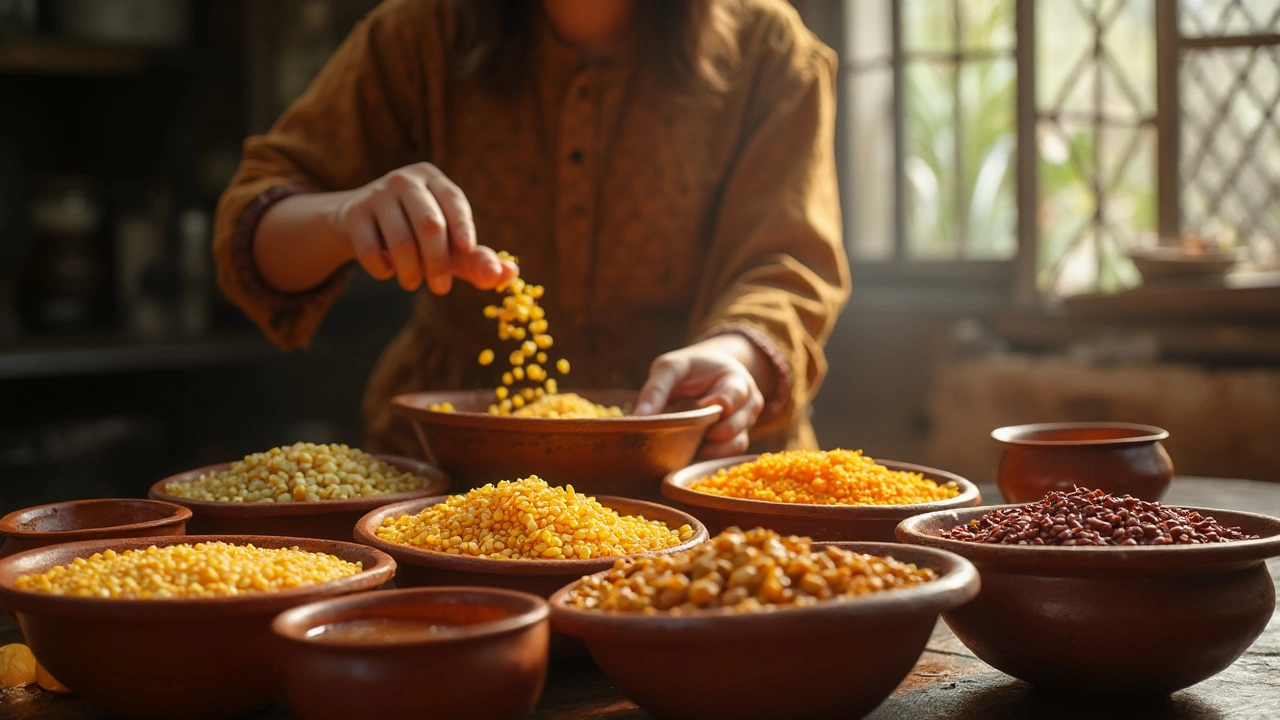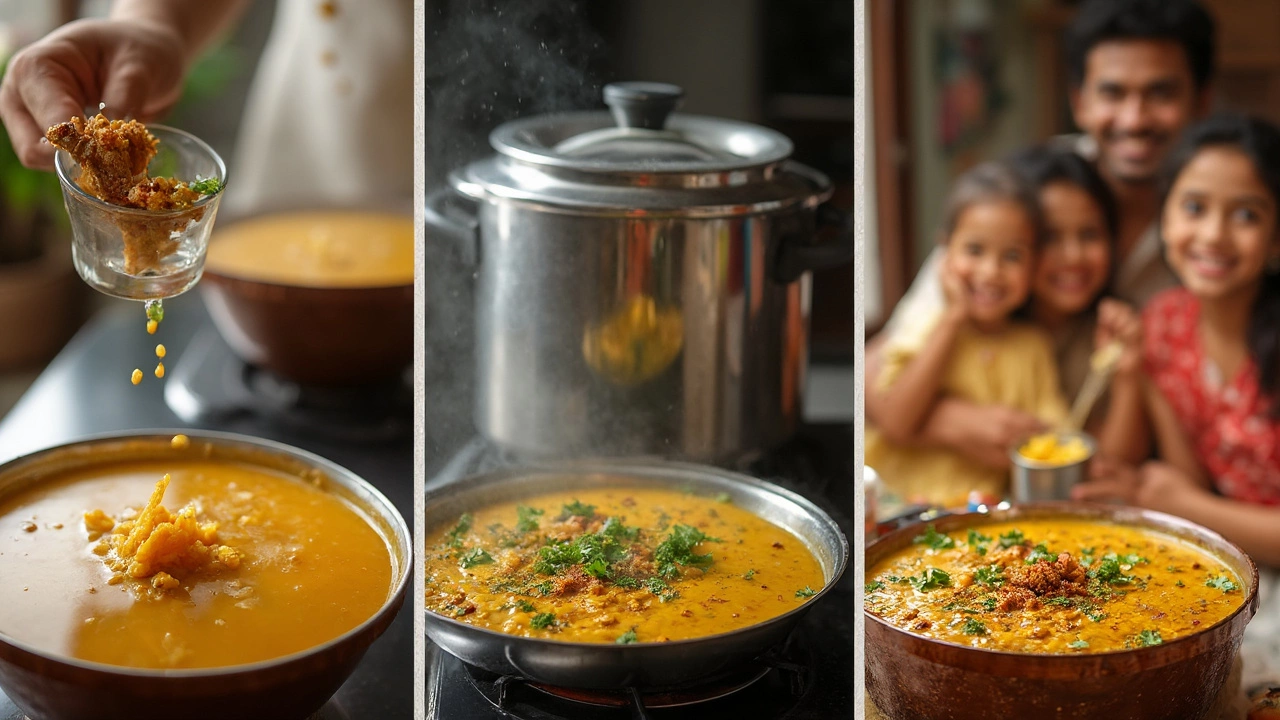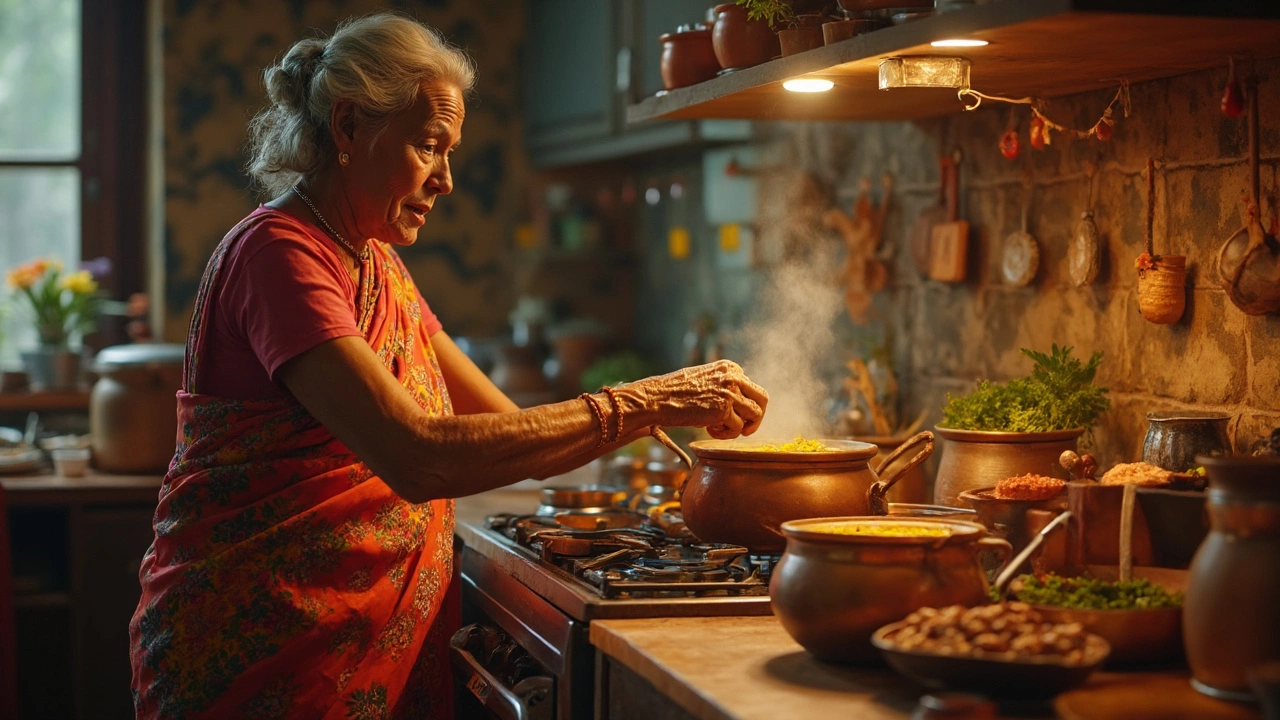Ever found yourself staring into the pot, wondering why your dal is still as hard as your patience by the time the rice is ready? You’re hardly alone. Dal—those tiny, mighty, protein-packed pulses—might seem simple, but getting them to the perfect softness can throw even seasoned cooks off their game. Factor in those stories about old lentils taking forever to cook or someone’s grandma whipping up perfect dal in twenty minutes flat, and things get even more confusing. But don’t worry—I’ve cooked more dal than I’ve had hot dinners, and I’m ready to spill the actual, no-nonsense details.
How Dal Softens: The Science Behind Perfect Texture
Let’s get straight into the most common question: why does dal sometimes soften in thirty minutes, while other times it’s still chewy after an hour? It all begins with the type of dal and what’s happened to it before it touches your pot. Dal, or split pulses, come in more varieties than you can count on your fingers: toor (pigeon pea), masoor (red lentil), moong (mung bean), chana (split chickpea), and urad (black gram), to name just a few.
Each type has its own cooking time. For example:
| Type of Dal | Typical Soften Time (Simmering on Stove) |
|---|---|
| Masoor Dal (Red Lentil) | 20–25 minutes |
| Moong Dal | 30–35 minutes |
| Toor Dal | 35–50 minutes |
| Chana Dal | 60–90 minutes |
| Urad Dal | 60–90 minutes |
That’s under basic stovetop simmering after rinsing and, in some cases, soaking. Water breaks down the cell walls and softens the dal. But here’s what people often miss: the older your dal, the longer it takes to soften. Freshly harvested dal, which you’re more likely to get from local Indian grocers or seasonally, will cook much faster than stuff that’s sat on the store shelf for a year. An authentic tip? If your dal refuses to soften after forever, it’s probably just old. No amount of extra boiling will make up for what nature already decided. Time for new stock.
Altitude, by the way, affects cooking times. At higher altitudes, water boils at a lower temperature, which means it takes a bit longer for dal to get tender. Next time you travel to the mountains, you’ll notice this firsthand.
Factors That Change How Long Dal Takes to Soften
Now, apart from the dal variety and how fresh it is, what else changes the rules? There’s actually more at play than you might think. Soaking is something most old-school recipes will mention. It hydrates the dal, shaving off cooking time—sometimes by half. Chana and urad dal especially benefit from an overnight soak. Even a speedy 30-minute soak helps.
Water quality is the sneaky villain here. If you're using hard water—water loaded with minerals—dal can stay stubbornly tough. The calcium in hard water binds to the dal’s structure, making it difficult to break down. Handy tip: add a pinch of baking soda (just a pinch!) to the cooking water. This makes the environment more alkaline, helping the dal soften faster. But too much, and you’ll end up with mush that tastes weird, so be stingy.
Salt is also a misunderstood character. There’s a myth that adding salt at the beginning delays softening. For dal, it’s not a big deal—unlike beans, where you sometimes wait until the end. Add salt when it suits you, but if you’re using very hard water, wait until the end, just to be safe.
- Age of dal: Older takes longer.
- Soaking time: Longer soaks = shorter cook.
- Dal variety: Split red lentils need less time; chana and urad need more.
- Water quality: Hard water slows things down.
- Cooking vessel: Pressure cooking is the game-changer.
- Salt and acidity: Add early or later, but avoid lots of acids until the dal is soft.
Acidic ingredients (like tomatoes or lemon) can harden the cell structure a bit, so wait to add these until your dal is nearly soft. If you’ve ever wondered why dal cooks faster in your pressure cooker, it’s because the high pressure increases the boiling point of water, breaking down those tough starches and fibers much faster.

Sizing Up Your Cooking Methods: Stove, Pressure Cooker, and More
Method matters—a lot. Traditionally, dal was simmered over a slow fire for a long time. While this still works, it’s not what you'd call efficient. These days, pressure cookers (old-school ones or modern instant pots) are the kitchen hero for busy cooks or anyone who hates standing watch over bubbling pots. Here’s a general breakdown:
- Stovetop simmer: Can take anywhere from 25 minutes (masoor dal) to 90 minutes (chana dal), depending on type and if you soaked it beforehand.
- Pressure cooker: Reduces cooking time dramatically—masoor dal softens in about 5 minutes, toor dal in 10 to 15, urad and chana dal in 20 to 25. Remember to let the pressure release naturally for best results.
- Instant Pot: Even more foolproof, with preset buttons for beans and lentils. Just mind the water-to-dal ratio; Instant Pots often need less water than traditional stovetop cooking.
- Slow cooker: Good if you want dal ready when you walk in from work, but be prepared for long stretches—anywhere from 4 to 8 hours on low, depending on dal type and quantity.
Microwaving is possible but fiddly, and rarely worth it for dal—uneven cooking is almost guaranteed unless you use a glass bowl and stir repeatedly. Nobody wants bitey bits in their bowl.
Troubleshooting: Why Is My Dal Not Softening?
You’ve cooked the dal as long as you believe any reasonable person should, but it’s still chewy or chalky. Frustrating, right? Here’s what might be getting in your way:
- It’s just old. Even sitting around a few months can toughen up dal, especially in hot or humid climates. Buy dal in small batches, use it up quickly, and store it in airtight containers away from light. Trust me, it makes a difference.
- Hard water. Again, minerals in hard water make it nearly impossible for dal to break down fully. Use filtered or bottled water if soft dal is a must, or try that pinch of baking soda trick.
- Forgot to soak? For certain dals (chana, urad), skipping soaking means you’re in for a long cook, no way around it.
- Added acid or tomatoes too soon? Hold off until the dal is already soft, then add your souring agents. Otherwise, you risk a gluey mess.
- Incorrect water-to-dal ratio. Too little water and the dal won’t cook through; too much and you dilute flavors or risk mush. For most dals, a ratio of about 1:3 dal to water works well for stovetop cooking. Pressure cookers often need only about 1:2.5.
If you’ve tried everything and your dal still isn’t softening, cut your losses. Start over with fresh dal. There’s no shame—it happens to the best of us.

Tips, Tricks, and Little Secrets for the Perfect Dal
Want that restaurant-style, silky dal? Here’s where it gets fun. My mom swore by adding a splash of oil or ghee into the simmering dal, which I’ve found actually helps soften the texture and add mouthfeel. Try aromatics—ginger and garlic, sautéed in oil or ghee—just before you cook the dal. Not only does this boost flavor, but the hot fat can help break down the dal’s surface (especially important for split dals).
Skim off the foam that forms when dal first boils. It’s mostly starch and little bits that can cloud the final dish. Your dal will taste cleaner.
If using a pressure cooker, don’t overfill—about halfway is maximum capacity. Too much dal in one go means uneven cooking or, worse, an exploded mess (I learned that the hard way—don’t ask).
- Add a pinch of turmeric at the start. It softens the dal a touch and brings color and gentle earthiness.
- If you like it creamy, mash some dal with the back of a spoon or use a hand blender.
- Finish with a tempering (tadka) of hot ghee or oil, whole spices, and sometimes onions or curry leaves. This brings your dal to life.
- Plan ahead—soak dals in the morning for evening, or overnight for morning, especially the denser varieties.
- Avoid using acids (tomato, lemon juice, vinegar) until you’re sure the dal softening time is up and the texture is right.
- Store leftover cooked dal in the fridge for up to 2–3 days, or freeze for up to a month. It’s a solid make-ahead meal.
And here’s a weird-sounding but surprisingly true fact: cooking dal with a stainless steel spoon in the pot can help distribute the heat more evenly. Give it a try and see if your dal softens just a few precious minutes faster!
So next time you’re holding your breath, waiting for that last simmering batch of dal to yield to your spoon, remember—sometimes the little details matter most. The right variety, good water, a little patience, and maybe a tiny bit of kitchen hackery will get you silky-soft, perfect dal. And now, you know exactly how long you should expect to wait—give or take ordinary human impatience, of course.
